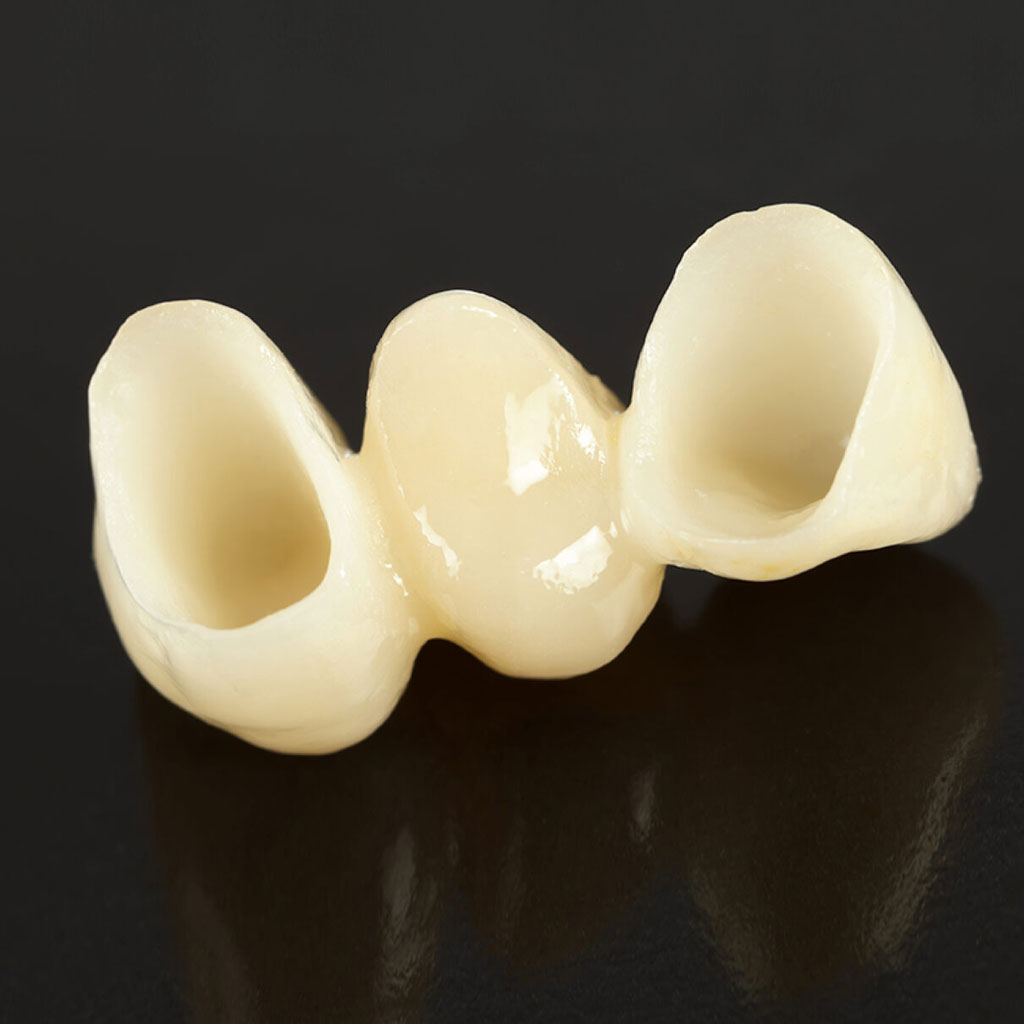Bridges
REPLACE MISSING TEETH & RESTORE YOUR SMILE WITH OUR NATURAL AESTHETIC BRIDGES
What are Dental bridges?
A bridge is a type of restoration that is used to replace one or more missing teeth.
A Dental bridge is typically made up of two or more artificial teeth that are anchored in place by dental crowns on either side of the gap. The dental crowns are placed on the natural teeth or dental implants on either side of the missing tooth or teeth, and are used to hold the artificial teeth securely in place.
They are also a great solution for patients who struggle to afford implants, and would like to avoid anything removable!

HOW DO BRIDGES STAY IN?
There are two main types of bridges: bonded bridges and winged bridges. The main difference between the two is in how they are anchored in place.
A bonded bridge is anchored by dental crowns on either side of the gap. The crowns are placed on the natural teeth or implants that are next to the missing teeth. This type of bridge requires the natural teeth on either side of the gap to be trimmed in order to place the crowns.
A winged bridge, on the other hand, is anchored in place by a framework that is bonded to the back of the existing teeth on either side of the gap. This type of bridge is less invasive as it does not require the reduction of the natural teeth.
Both types of bridges are effective in replacing missing teeth, but the best option for you will depend on your individual case and preferences.
HOW DO Dental BRIDGES STAY IN?
There are two main types of bridges: bonded bridges and winged bridges. The main difference between the two is in how they are anchored in place.
A bonded bridge is anchored by dental crowns on either side of the gap. The crowns are placed on the natural teeth or implants that are next to the missing teeth. This type of bridge requires the natural teeth on either side of the gap to be trimmed in order to place the crowns.
A winged bridge, on the other hand, is anchored in place by a framework that is bonded to the back of the existing teeth on either side of the gap. This type of bridge is less invasive as it does not require the reduction of the natural teeth.
Both types of bridges are effective in replacing missing teeth, but the best option for you will depend on your individual case and preferences.
THE DIFFERENT TYPES OF Dental BRIDGE
There are several types of bridges, and the exact placement process of your bridge will depend on the type we’re fitting:

TRADITIONAL BRIDGES
This type of bridge uses crowns retained by existing teeth or implants placed on either side of the gap to support a pontic. This is the most common type of bridge and is typically made from porcelain.

CANTILEVER BRIDGES
Cantilever bridges are fixed dental bridges that are held in place on only one side of a missing tooth. The cantilever is a beam that extends out horizontally and only has support on one end. Like cantilever bridges in architecture, cantilever dental bridges use support from one side to prop up the middle false tooth.

MARYLAND BRIDGES
A Maryland bridge uses metal wings on either side of the pontic to gain support from the backs of teeth neighbouring the gap. The metal framework that supports the bridge is held in place by composite resin. A special light is used to cure the resin, firmly bonding the metal to the backs of the teeth so that nobody will know they’re there.
REPLACE MISSING TEETH WITHOUT SURGERY
At Belwell Dental, Sutton Coldfield, Birmingham, bridge the gaps created by one or more missing teeth. Use the button below to enquire about dental bridge treatment.

What is the best option for a missing tooth?
This question is best answered by your dentist at your consultation, however there are a few options available.
It is dependant on a few factors:
- Time – if you require a replacement in a shorter period of time, dentures may be more ideal in a very small time frame.
- Tolerance for new appliances – if you are sensitive to changes in your mouth, implants are the most natural feeling restoration available today.
- Budget – this will determine which restoration will work for you, however a bridge or denture can often satisfy a lot of our patients at less than half the cost of an implant!
THE BENEFITS OF DENTAL BRIDGES
Dental bridges restore the appearance and function of your teeth. They are sturdy and provide reliability when it comes to your bite. Our made-to-measure bridges are perfectly designed to match the colour, shape, and size of your natural teeth.


